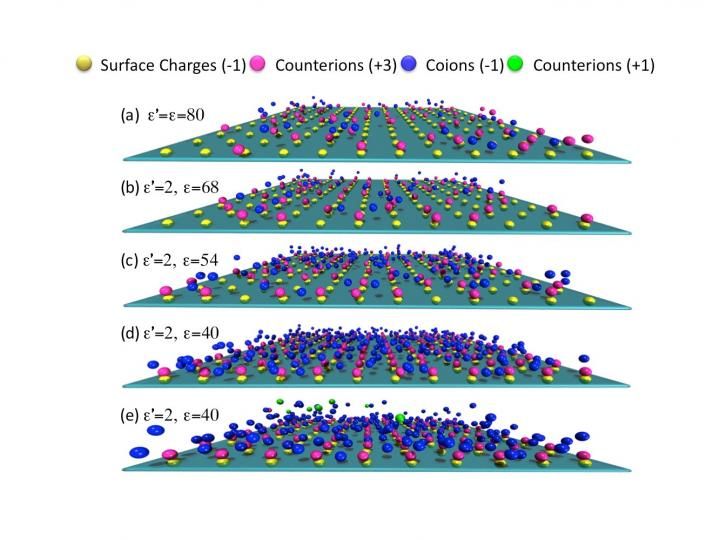Final destination deep sea: microplastics impact ocean floor even more than assumed
The deep sea serves as the “oceans’ garbage dump” – and it is surprisingly dynamic when it comes to deposition
Senckenberg researchers Serena Abel and Angelika Brandt, together with colleagues from the Alfred Wegener Institute – Helmholtz Centre for Polar and Marine Research (AWI) and Goethe University in Frankfurt, have investigated microplastic pollution in the Western Pacific Kuril-Kamchatka Trench. They found between 215 and 1596 microparticles per kilogram in each of a total of 13 sediment samples from depths of up to 9450 meters – more than previously detected. Their study, recently published in the journal “Science of The Total Environment,” reveals that the deep sea serves as the “oceans’ garbage dump” – and it is surprisingly dynamic when it comes to deposition. The high biodiversity at the deepest ocean floor is severely threatened by microplastic pollution.

In each of the sediment samples collected, the scientists detected microplastic particles – between 215 and 1596 particles per kilogram of sediment.
AWI
Microplastics are everywhere. Tiny plastic particles pollute nearly every ecosystem on Earth. Oceans are particularly affected, and as the newly published study suggests, marine trenches thousands of meters below sea level are the “final resting place” for a disturbingly large amount of the tiniest plastic particles.
Serena Abel, a visiting researcher at the AWI and a research associate at the Senckenberg Research Institute and Natural History Museum in Frankfurt, along with Prof. Dr. Angelika Brandt, head of the institute’s Department of Marine Zoology, and researchers from Goethe University and the AWI, evaluated sediment samples from the bottom of the Kuril-Kamchatka Trench in the Western Pacific that were collected in 2016 during a deep-sea expedition with the research vessel “Sonne.” “We took a total of 13 samples at seven different stations along the trench, from depths ranging between 5740 and 9450 meters. Not a single site was free of microplastics,” reports marine biologist Abel, and she continues, “Per kilogram of sediment, we detected between 215 and 1596 microplastic particles – no one would have expected such a large number prior to this.
By using the micro-FTIR method, a special variant of a spectrometer, the researchers were able to detect even the smallest microplastic particles. “Each year, an estimated 2.4 to 4 million tons of plastic enter the oceans via rivers as a result of excessive global plastic consumption and poorly organized waste disposal. A significant portion of these particles sinks to the ocean floor and accumulates in the sediment, while others are carried by currents to the deepest regions, where they are eventually deposited. This turns the deep sea into the ‘final waste repository’,” warns Brandt. The researchers found a total of 14 different types of plastic in the samples from the Kuril-Kamchatka Trench. Among the most common substances were polypropylene, one of the standard plastics used for packaging worldwide, as well as acrylates and polyurethane, which are used for paints.
The research team was surprised by the large differences between the individual samples. “Until now, the deepest ocean floor was considered a comparatively unaffected and stable environment where microplastics were deposited and remained in one place. Thus, we were all the more surprised to find that even samples taken only a few meters apart showed very a different composition,” says Abel, and she adds, “This demonstrates just what a dynamic environment the deepest areas of the deep sea really are. The sediment is kept in motion not only by special currents and eddies, but also by the organisms native to the area.” In fact, biodiversity at the bottom of the Kuril-Kamchatka Trench is actually higher than in shallower areas of that trench. “It is precisely this high biodiversity in the deep sea that is now under particular threat due to the heavy microplastic pollution!” says Brandt, summing up the researchers’ concern about the continuously increasing plastic pollution in the oceans.
Original publication
Most read news
Original publication
Serena M. Abel, Sebastian Primpke, Fangzhu Wu, Angelika Brandt, Gunnar Gerdts,Human footprints at hadal depths: interlayer and intralayer comparison of sediment cores from the Kuril Kamchatka trench, Science of The Total Environment, Volume 838, Part 2, 2022.
Topics
Organizations
Other news from the department science

Get the chemical industry in your inbox
By submitting this form you agree that LUMITOS AG will send you the newsletter(s) selected above by email. Your data will not be passed on to third parties. Your data will be stored and processed in accordance with our data protection regulations. LUMITOS may contact you by email for the purpose of advertising or market and opinion surveys. You can revoke your consent at any time without giving reasons to LUMITOS AG, Ernst-Augustin-Str. 2, 12489 Berlin, Germany or by e-mail at revoke@lumitos.com with effect for the future. In addition, each email contains a link to unsubscribe from the corresponding newsletter.




























































